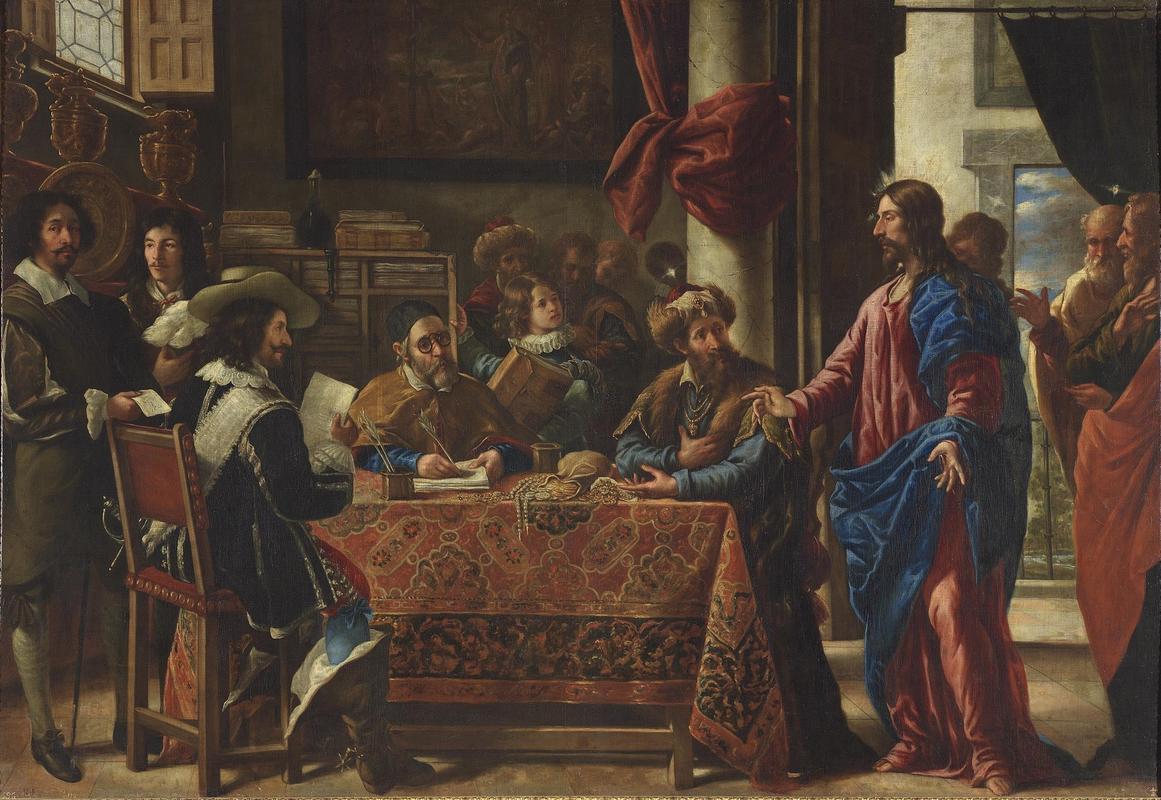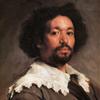More about The Calling of Saint Matthew
- All
- Info
- Shop

Contributor
In The Calling of Saint Matthew, Pareja paints a Matthew and Jesus worthy of Vogue.
Pareja knew he couldn’t win against the lighting in Caravaggio’s version of the story, so he adds some bold fashion statements to compensate. Who needs dramatic shadowing and beams of light when your subjects could all pass as runway models? Furs, plumed hats, and lace collars look surprisingly snazzy on Matthew and his chums.
In this moment, the titular apostle hesitates between counting his gold coins and joining Jesus. The choice may seem pretty easy— tax collectors never have many fans, and Jesus’s robes do look pretty comfy— but Pareja depicts Matthew in a state of mental conflict. He points to Jesus with one hand and a bag of money with the other, torn between a religious calling and the daily grind of a nine to five. All Jesus really had to do to convince Matthew was show him the Disney adaptation of Robin Hood. After seeing the Sheriff milk Nottingham dry, any tax collector would doubt their own profession.
Juan de Pareja snuck a self portrait into his masterpiece. He stands to the left, signature in hand, proudly marking the work as his own and preserving his image for posterity. From his sprightly appearance, far more youthful than most men in their fifties, it’s clear that Pareja took some liberties with accuracy. In the days before photography, painting out the imperfections was common practice. Wrinkles? What wrinkles?
Because of this self portrait, Pareja was identifiable as the subject of Velázquez’s renowned portrait. Pareja had always been a learned man; he was witness to multiple legal documents for Velázquez and taught himself to paint like the Italian masters. Until 1654, however, he served in Velázquez’s household as a slave. Pareja painted The Calling of Saint Matthew as a free man, and gave his self portrait the sword and garb of a gentleman. His head is outlined by a round golden plate, reminiscent of a halo, and his steady gaze is turned towards his audience. This was Pareja’s magnum opus, and he wasn’t about to let you forget it.
Sources
- Clarke, Terence. “The Soul of Juan de Pareja.” Huffington Post. May 13, 2013. Accessed August 15, 2017. http://www.huffingtonpost.com/terence-clarke/juan-de-pareja-velazquez_b….
- Fikes Jr., Robert. “Juan de Pareja and Sebastian Gomez: Masters of Spanish Baroque Painting.” The Crisis 87 (February 1980): 49-54.
- Ortiz, Antonio Domínguez, Alfonso E. Pérez Sánchez, and Julián Gállego. Velázquez. New York: Metropolitan Museum of Art, 1989.
- Lugo-Ortiz, Agnes, and Angela Rosenthal, eds. Slave Portraiture in the Atlantic World. New York: Cambridge University Press, 2013.
- “Pareja, Juan de.” Museo del Prado. 2017. Accessed August 15, 2017. https://www.museodelprado.es/aprende/enciclopedia/voz/pareja-juan-de/bb….
- “Pareja, Juan de (1606?-1670).” BlackPast.org. 2017. Accessed August 17, 2017. http://www.blackpast.org/gah/pareja-juan-de-1606-1670.












